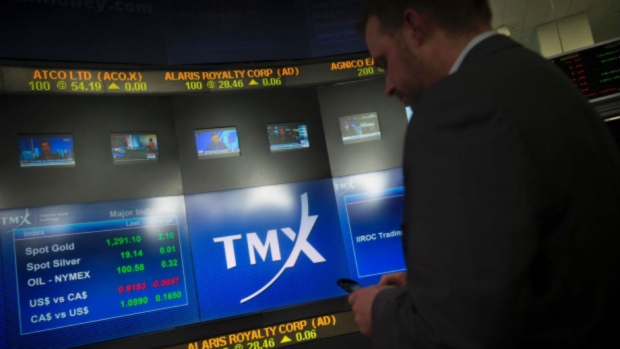Jul 24, 2017
Heavyweights look to pull TSX out of the doldrums with Q2 earnings

A slate of TSX heavy hitters are set to kick off second-quarter earnings season in earnest, with Suncor, CN Rail and Barrick Gold headlining a week that could prove pivotal for the underperforming index.
The overall composite has shed 0.7 per cent over the course of 2017, badly lagging all of its developed-market peers due to the drag of the energy index, which has fallen more than 14 per cent on a year-to-date basis.
At least one Bay Street money manager thinks a strong earnings season won’t be enough to pull the TSX out of the doldrums if underlying commodity prices don’t improve. In an interview on BNN, Nathan Thooft, co-head of Global Asset Allocation at Manulife Asset Management, said it would take a meaningful uptick in crude oil prices to help the TSX out of the basement.
“I think you need to see more than just the earnings, you actually have to see real evidence that the oil price remains somewhat stable and the downside pressure we’ve seen starts to alleviate,” he said. “So it’s not only just the earnings, we actually have to see the raw commodity stabilize as well.”
- We're #91!: Lacklustre 2017 lands TSX between Laos and Serbia
- Oil rises after Saudi vows to cap crude exports next month
RELATED ITEMS
Thooft said there are some encouraging signs a pickup in oil demand is helping draw down massive U.S. stockpiles of crude, with the Department of Energy reporting a drop in inventories in five of the last six weeks.
“There’s been a lot of focus these days on both the supply side and the demand side of oil, and I think you’re seeing some early evidence on the supply side that inventories are starting to behave themselves a little bit better,” he said. “Oil is off its low, not by a lot, but the path at least is no longer descending.”
Thooft said CN Rail (CNR.TO), which reports earnings Tuesday, should be a good barometer for the overall health of the Canadian economy, due to both its domestic exposure and its sensitivity to export volumes.
“We’re looking at the broader export dynamics and the overall capacity that are on these transport kind of names, and for the most part the data is pretty good,” he said. “Generally speaking, we’re pretty positive on the broader import-export data dynamics both outside the United States and in Asia as well. That usually bodes well ultimately for these kind of companies.”






